Honey Carrot Cake
[amd-zlrecipe-recipe:6]
[amd-zlrecipe-recipe:6]

Ah, popcorn. A movie staple, a campfire favorite, even a Christmas decoration. We’re big fans of the stuff here at our house. The way we enjoy it, though, is the semi-old fashioned way: we make ours with the air popper (the truly old-fashioned way is in a skillet, over a fire, just in case you were wondering). Back in our pre-microwave days in the 1980s, my mom always made popcorn with the air popper. She’d salt it a little and mix in some melted butter. Mmmmm…
Then the microwave relegated the air popper to the back of the cupboards, taking up space alongside the other hardly used appliances. It just seemed so much more convenient to just pop the bag in the microwave. Sure, sometimes a good portion of the bag’s contents were either charred or completely unpopped, but that was the trade-off for a pre-seasoned and effortless bag of popcorn. That’s the way it was for us, at least.
For Christmas in 2008, my parents gave us an air popper (we’re still using the same one) and some fun serving containers. We stopped buying the microwave stuff and have only used our air popper ever since. Though this is our preferred way to pop, there are other methods, like cooking it on the stovetop or microwaving popcorn kernels in a brown paper bag. Each way works well and is better than the stuff sold pre-packaged at the store. Here are six reasons why you should take the boxes of microwave popcorn off your shopping list…
1. Homemade popcorn is frugal.
Hence the mention on here, right? There is no denying that buying the popcorn kernels is much cheaper, especially if you can find it in the bulk food bins at the grocery store (most common in health/natural food stores). With microwave popcorn, you’re paying for the bags, the brand, the oils and seasonings, and plastic packaging. For the same price of a few bags of microwave popcorn, you could get pounds of the kernels. It only takes a half cup of kernels in our air popper to yield a big bowl of popcorn. A pound of popcorn goes a long way. Even if you buy the popper (which run around $15-25), it’s still the more frugal way to enjoy popcorn. Just by skipping microwave popcorn and getting the kernels in bulk, the popper soon pays for itself in savings.
2. Homemade popcorn is less wasteful.
Whenever I make popcorn, there’s maybe two or three kernels left unpopped, maximum. And I’ve never had burned popcorn making it with the air popper. All those burnt/unpopped kernels at the bottom of the microwave is waste. Unless you’ve gotten microwaving popcorn down to a science or the popcorn setting on your microwave actually works, waste is practically inevitable.
3. Microwave popcorn takes as long to pop as homemade.
To prove this, I timed how long it took to pop half a cup of kernels (which equals a big bowl of popcorn). Barely over two minutes (plus the 30 or so seconds it took to get the popper out of the pantry, get a bowl out of the cupboard, and plug it in). That’s just about as long as it takes to do the microwave stuff. I can’t say how long it takes to do it the other ways I mentioned — on the stovetop or in the paper bag — but I’m willing to bet it’s pretty close. So, really, what are you paying for with microwave popcorn? Is it really that much more convenient?
4. Microwave popcorn is unhealthy. Like, really unhealthy.
I recently read an article entitled, “7 Seven Foods That Should Never Cross Your Lips” and microwave popcorn is on the list. Here’s why, quoting the article:
“Chemicals, including perfluorooctanoic acid (PFOA), in the lining of the bag, are part of a class of compounds that may be linked to infertility in humans, according to a recent study from UCLA. In animal testing, the chemicals cause liver, testicular, and pancreatic cancer. Studies show that microwaving causes the chemicals to vaporize—and migrate into your popcorn. ‘They stay in your body for years and accumulate there,’ says Dr. Naidenko, which is why researchers worry that levels in humans could approach the amounts causing cancers in laboratory animals. DuPont and other manufacturers have promised to phase out PFOA by 2015 under a voluntary EPA plan, but millions of bags of popcorn will be sold between now and then.”
Yuck.
5. Cheap entertainment.
My older son has been entertained by the popcorn popper since the first time we used it, back when was barely two years old. Even now as a big five-year-old, he still likes watching the kernels spin and then pop like crazy. It’s a great way to dispell a grouchy mood. Even though the baby doesn’t eat popcorn yet (choking hazard and all), he giggles and squeals as we make it. Homemade popcorn is also better for crafts like popcorn chains (can you imagine stringing greasy microwave popcorn?).
6. Homemade popcorn tastes better.
Microwave popcorn in “butter flavor” doesn’t come close to popcorn with real butter. It just doesn’t. It might take you a little adjustment at first if you’re used to the intensely flavored and super-salty stuff, but once you’re used to the wholesome taste of popcorn seasoned with some salt and real butter, you’ll think the microwave stuff is gross. Plus, there are other options for seasoning air popped popcorn: cocoa popcorn (my son literally licked the bowl clean), basil popcorn (yum), toffee popcorn (this recipe looks amazing), and more. The best part about homemade popcorn is that you control what goes (and doesn’t go) in it. You can make it as healthy or as decadent as you want.
All this is making me hungry. I’m going to go make some now. So should you.
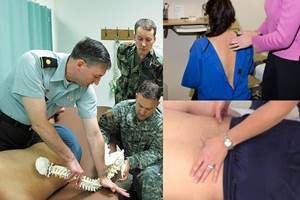 Palpation is the most frequently used diagnostic technique in chiropractic care and is a clinical cornerstone of most physicians’ practice. It is a manual, non-invasive method of determining where a patient has structural or functional problems in the body.
Palpation is the most frequently used diagnostic technique in chiropractic care and is a clinical cornerstone of most physicians’ practice. It is a manual, non-invasive method of determining where a patient has structural or functional problems in the body.
In palpation, chiropractors use their hands and their detailed knowledge of anatomy to effectively see what is happening in the spine and its supporting structures, such as the muscles, tendons and ligaments. As your chiropractor palpates your spine, he or she will look for subluxations in your vertebrae, which are misalignments that may be causing pressure on spinal nerves, or other abnormalities that may be causing problems in your musculoskeletal system.
There are essentially two forms of palpation—static and motion. As the name suggests, in static palpation the patient remains still while the chiropractor palpates the spine and tissues to identify any misaligned vertebrae, protruding disks, and areas of pain or inflammation. In motion palpation however, the patients joints are mobilized, bending and flexing under the expert eye and hand of the chiropractor. He or she will move various joints through different planes, observing the patient’s range of motion and where a joint may “lock up.” They will also measure the patient’s amount of flexibility, muscle strength, stiffness, reflexes and general neurological function.
Palpation may be used at every visit to your chiropractor so they can quickly determine whether your condition has improved or not since your last visit and they can see which areas need the most care and attention. Based on what your chiropractor finds during palpation, he or she may then order additional diagnostic tests—an x-ray, MRI or CT scan, for example—to get a more detailed view of your condition.
Your chiropractor will also perform a visual examination to detect any swelling or abnormal curvature of the spine, and will observe your gait to see the coordination of your head, neck and pelvis as you move. They will also take a full medical history and ask about the location, frequency and severity of any present and past conditions.
Based on all these diagnostic tools, your chiropractor can better determine the type and frequency of treatment necessary to resolve your condition in a way that is holistic, drug-free and non-invasive. Palpation is simply another tool in the chiropractor’s arsenal of techniques to keep you moving well and pain-free.
With all of the snowy weather we have had, you may need your back palpated! Be sure to schedule an appointment with Dr. Oblander by calling 406-652-3553.
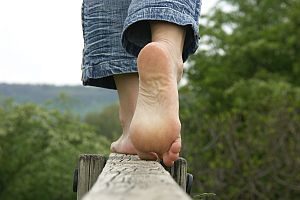
Proprioception is a complex system of anatomical checks and balances, neural impulses, and brain functions that controls our sense of balance, coordination, and agility. Put most simply, proprioception is the “sixth sense” that enables you to scratch your head without looking in a mirror or climb a flight of stairs without having to look at each step.
Most of us are so accustomed to proprioception that we take it for granted. Its development starts soon after we are born and is observed in infants as soon as they gain control of their neck muscles. When the infant’s body tilts in any direction, its head also tilts in the opposite direction to level its eyes with the horizon. This “righting reflex” is the beginning of our sense of balance.
More technically, proprioception is your body’s ability to transmit a sense of its position in space, analyze that information, and react—either consciously or unconsciously—to stimuli with the proper movement and force. Proprioceptors are a specialized type of motor and sensory nerve that transmits impulses to the central nervous system (in particular, the area of the brain known as the cerebellum) from stimuli felt by the muscles, tendons, joints, and skin. The impulses transmitted by proprioceptors contain vital information, such as the amount of tension in a particular muscle and the relative position of a body part when it is moving.
, Proprioception is what enables you to reach for a glass and actually find it in space. It is also what allows you to pick up the glass with just the right amount of force, neither dropping it nor breaking it by squeezing too hard. Proprioception is what enables you to keep your balance when walking on uneven surfaces or when riding a bicycle. The impulses from proprioception combine with input received from the vestibular system (the fluid-filled network in the inner ear that enables us to feel the pull of gravity and know which direction is “up”) and with input from the visual system to create our sense of balance.
However, just as our eyes become weaker with age, so can the proprioceptive system, leading to a loss of proper balance. This is one of the reasons that falling is the number one cause of hospital admissions for people over 60. Something has gone wrong with the complex processing of information needed to maintain their balance, so older people are more likely to slip and fall on stairs or on slippery sidewalks and injure themselves.
Fortunately, you can strengthen your proprioceptive system by practicing simple balance exercises, thus keeping keep your sense of balance from weakening as you grow older. There are many forms of inexpensive exercise equipment (such as BOSU or Bongo Boards) that enable you to stand on a platform that is designed to be wobbly. This instability forces your muscles and your proprioceptive system to work more, and thus become stronger. So if you are over the age of 50, you should consider speaking to your chiropractor about exercises to improve your proprioception. They are very simple but can greatly improve your overall sense of balance, therefore significantly reducing your risk of injury from falls as you grow older. To schedule an appointment with Dr. Oblander, call 406-652-3553.
[amd-zlrecipe-recipe:4]
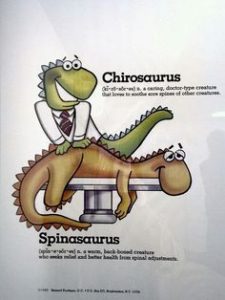
We hope you have a wonderful weekend! Stay warm and safe!
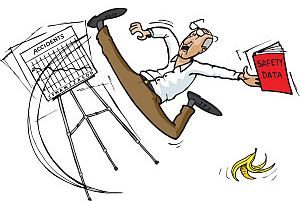 While we’ve all seen the old banana peel skit, slips and trips in the real world are no laughing matter. Simply falling to the floor or pavement from an upright position causes a great many serious injuries—and even deaths—each year. No one really knows for certain how many falls could actually be prevented, but the topic is of growing interest to a wide variety of people, from public health officials, designers, architects and community planners to business owners, workplace supervisors and employees. Senior citizens are perhaps the most at risk. The U.S. Centers for Disease Control and Prevention (CDC) presents several statistics that highlight this point:
While we’ve all seen the old banana peel skit, slips and trips in the real world are no laughing matter. Simply falling to the floor or pavement from an upright position causes a great many serious injuries—and even deaths—each year. No one really knows for certain how many falls could actually be prevented, but the topic is of growing interest to a wide variety of people, from public health officials, designers, architects and community planners to business owners, workplace supervisors and employees. Senior citizens are perhaps the most at risk. The U.S. Centers for Disease Control and Prevention (CDC) presents several statistics that highlight this point:
Walking is a very complex activity, and science has only recently begun to understand the biomechanics involved. Shirley Wang wrote in a recent Wall Street Journal article, “Scientists are finding that maintaining stability and balance with each step we take requires complex coordination of foot placement, arm movement, trunk angle and neck and head motion.” At the same time, researchers are also learning how other factors like sloping, uneven or slippery surfaces and obstructions come into play. There are many variables to consider. Even when the body’s movements are perfectly coordinated, small things about environment can still foil our best efforts to remain upright.
We know from nervous system studies that the body is capable of reacting within milliseconds. Science has shown that a person’s balance is maintained by simultaneous feedback from the body’s visual system, proprioceptive system and inner ear. If one of these systems becomes less efficient or fails altogether, then the other two can usually compensate to keep us balanced. If two fail, then balance becomes far more difficult. Aging frequently leads to poorer eyesight and troubles with the inner ear, so it’s small wonder that seniors are more likely to fall.
Canadian researchers at Simon Fraser University used video cameras in a long-term care facility to see if seniors were right about “tripping” or “slipping” being the reasons for their falls. What they found was surprising. Tripping actually accounted for only 20% of events. The nearly 3-year study of 227 falls involving 130 people showed that the single largest cause (41%) was from improper weight shifting, such as leaning over too far. This seems to indicate a failure in the seniors’ proprioceptive system.
There are a few ways you can help to prevent slips and falls. Be sure to keep walkways clear of clutter, and consider adding non-skid material to flooring—especially to floors that are more likely to become wet. Maintaining your strength helps too. Upper body strength is particularly important for catching yourself before or during a fall. Even when there’s nothing to grab onto, having the sort of upper body strength that helps you to do push-ups can soften the blow to more sensitive parts of the body. Reaching out with hands and flexing elbows upon impact can slow the fall or stop it altogether. The late Jack LaLanne, fitness guru, was still doing fingertip pushups at age 93. Don’t say it can’t be done!
Balance requires that every part of the body works well together. Dr. Oblander can help you maintain this balance by ensuring you have a healthy spine and nervous system. He can also recommend specific exercises that maintain or increase your upper body strength. So if you or someone you care about is interested in avoiding slips and falls, we can help you take advantage of the latest research! Just call or visit our office today: 406-652-3553!
 A very recent review of prophylaxis of migraine was published in the Canadian Medical Journal (1). To say the least, their findings were remarkable. Although this was a medically oriented review, several herbal and nutritional approaches were rated as effective as drug therapy with significantly fewer reported adverse events. Table 1 is a summary of the findings of the review for interventions when the outcome measure used was the odds ratio of a 50% decrease in frequency of migraine. All findings were based on studies that were graded by the authors as A or B evidence based on the United States Preventive Services Task Force criteria.
A very recent review of prophylaxis of migraine was published in the Canadian Medical Journal (1). To say the least, their findings were remarkable. Although this was a medically oriented review, several herbal and nutritional approaches were rated as effective as drug therapy with significantly fewer reported adverse events. Table 1 is a summary of the findings of the review for interventions when the outcome measure used was the odds ratio of a 50% decrease in frequency of migraine. All findings were based on studies that were graded by the authors as A or B evidence based on the United States Preventive Services Task Force criteria.
Table 1
| Intervention | Quality of evidence | Odds ratio of 50% decrease in frequency |
Adverse effects |
| Divalproex | A | 2.74 | Frequent at higher dosages |
| Gabapentin | B | 4.51 | Occasional |
| Topirmate | A | 2.44 | Frequent |
| Amitriptyline | B | 2.41 | Occasional |
| Propranolol | B | 1.94 | Infrequent |
| Riboflavin (400 mg/day) | A | 5.60 | Infrequent |
| Butterbur (50 mg B.I.D) | A | 2.24 | Infrequent |
Pharmaceutical interventions are obviously favored by the medical community even when, at least according to this review, riboflavin and butterbur demonstrate equal or superior effectiveness in A graded studies yet report infrequent adverse effects.
Butterbur: A 2006 systematic review reported on 2 randomized trials (RCT) of butterbur extract (Petasities hybridus) which totaled 293 patients. In these studies a 150 mg dose of butterbur was more effective than a 100 mg dose over a period of 3 to 4 months. Overall butterbur demonstrated a decreased frequency of migraine in over 50% of patients. The brand name of the form of butterbur used in this study was Petadolex (2). In an open label study of 109 children and adolescents the authors found 77% of all patients reported at least a 63% reduction in the frequency of migraine (3). Although no significant adverse effects have been reported in the studies mentioned above, concerns relating to hepatotoxicity have been reported in the literature. A recent study utilizing Petadolex found it to be “free of signals for drug induced liver injury” (3). Several authors have suggested butterbur may be a valuable tool in the prevention of migraine (4-7).
Feverfew: Feverfew is herb that has demonstrated effectiveness in the prevention of migraine in some studies and conflicting results in other studies. Three Cochrane reviews have been published relating to feverfew. The original review could not demonstrate efficacy for feverfew (8) but an update published the same year reported “feverfew is likely to be effective in the prevention of migraine (9). The third review returned to the original position stating “there is insufficient evidence” to suggest an effect (10). A separate article suggested the reason for lack of efficacy reported in the most recent Cochrane review was the 400% variation in the active ingredient in the studies evaluated (5). One RCT published after the Cochrane reviews showed migraine attacks decreased from 4.76 attacks per month to 1.9 when using MIG-99 after 3 months. A dosage of 6.25 mg t.i.d. were used (11). All studies reported a favorable safety profile.
Coenzyme Q10: Coenzyme Q10 has demonstrated efficacy in 1 RCT and several open trial design studies. The RCT was a study of 42 patients. The dosage was 100 mg t.i.d. There was a 50% decrease in headache frequency in 42.6% of the patients in the active treatment group compared to 14.4% in the placebo group after 3 months. The number needed to treat was 3 (12). Another case series found similar benefits using 150mg daily (13). None of the studies on coenzyme Q10 reported adverse effects.
Riboflavin: A RCT compared a combination of riboflavin (400 mg), magnesium (300 mg) and feverfew (100 mg) to 25 mg of riboflavin. Both groups achieved statistically significant improvements over baseline. The authors noted both groups exceeded the normal placebo response reported in other migraine prevention studies. This study suggests a small dose of riboflavin may be an effective prophylaxis for migraine (14). Another RCT using 400 mg daily reported statistically significant improvements in headache frequency and headache days after 3 months. The number needed to treat in this study was 2.3 (15). Unfortunately 2 studies of riboflavin in children did not demonstrate improvement (16;17).
Magnesium: A 2008 RCT examined the prophylactic effect of 600 mg of magnesium citrate daily for 3 months compared to a placebo. Statistically significant improvements in frequency and severity were found in the treatment group. Additionally cortical blood flow increased significantly in the treatment group (18). A second RCT also found a statistically significant decrease in migraine frequency after 3 months using 360/mg per day (19). Not all RCTs have shown magnesium to be of effective. A 1996 RCT found no benefit when using magnesium (20). Soft stools and diarrhea were a common mild adverse event occurring in 18.6% (19) to 47.7% (20) in the magnesium groups.
Several other interventions have limited evidence demonstrating effectiveness. They include ginkgolide B (21), lipoic acid ( 600 mg/day) (22) and fish oil or olive oil (23).
It should be noted that time frame of treatment almost all prevention studies is 3 months. Treatment success or failure should not be assessed prior to completion of 3 months of the intervention.
Article is shared from www.chiroaccess.com
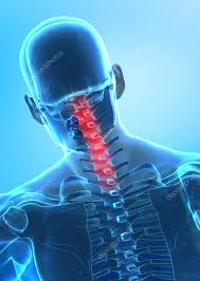
A healthy spine is an often overlooked and essential part of a healthy lifestyle. People who suffer from back pain, particularly if it is long-term, are generally less healthy than those who do not. In fact, back pain costs are staggering not only financially, but also in terms of lost time from work and because of psychosocial problems that arise during the healing process associated with long-term back pain.
Unfortunately, approximately 80-90% of the population suffers from spinal pain at some point. People who are overweight or obese, and who smoke, lift heavy objects, or had a previous episode of back pain, are more likely to experience back pain.
Because so many people suffer from spine pain, it’s important for you to try to keep your spine as healthy as possible. Following simple posture, lifting, and healthy lifestyle guidelines can help you keep your back in good shape. One of the best things you can do for your spine is to get regularly adjusted. If you are in need of an adjustment, be sure to call our office at 406-652-3553 and schedule an appointment with Dr. Oblander. In the meantime, here are some good ways to take care of your spine:
The American Chiropractic Association recommends the following spinal health tips:
Standing
• When standing, keep one foot slightly in front of the other, with your knees slightly bent. This position helps to take the pressure off your low back.
• Do not stand bent forward at the waist for prolonged periods of time. The muscles in your low back become deconditioned in this position, which may lead to pain.
Lifting
• At all times, avoid twisting while lifting. Twisting is one of the most dangerous movements for your —spine, especially while lifting.
• If the item is too heavy to lift, pushing it is easier on your back than pulling it. Whenever possible, use your legs, not your back or upper body, to push the item.
• If you must lift a heavy item, get someone to help you.
Sitting
• Keep your knees slightly higher than your hips, with your head up and back straight.
• Avoid rolling your shoulders forward (slouching).
• Try to maintain the natural curve in your low back.
Reaching and Bending
• When reaching for something above shoulder level, stand on a stool. Straining to reach such objects may
not only hurt your mid-back and neck, but it can also bring on shoulder problems.
• Do NOT bend over at the waist to pick up items from the floor or a table.
• Instead, kneel down on one knee, as close as possible to the item you are lifting, with the other foot flat on the floor and pick the item up.
• Or bend at the knees, keep the item close to your body, and lift with your legs, not your back.
Carrying
• When carrying objects, particularly if they are heavy, keep them as close to your body as possible.
• Carrying two small objects—one in each hand—is often easier to handle than one large one.
Healthy Diet and Exercise
• While the proverbial jury is still out, we suspect that extra weight puts undue strain on your spine. Keep within 10 lbs. of your ideal weight for a healthier back.
• “Beer belly” is likely the worst culprit, as it puts unwanted pressure on the muscles, ligaments and ten- dons in your low back.
• The most efficient and effective way to reduce weight is by eating a sensible diet and exercising regularly.
• Consult with your doctor before beginning any exercise program, particularly if you have a health condition.
Sleeping
• Sleeping on your back puts approximately 50 pounds of pressure on your spine. Other positions may be better
.
• Placing a pillow under your knees while lying on your
back cuts the pressure on your spine roughly in half.
• Lying on your side with a pillow between your ——– knees may also reduce the pressure on your back.
• Never sleep in a position that causes a portion of —- your spine to hurt. Most often, your body will tell you what position is best.
Quit Smoking
Smokers have more spine pain than nonsmokers, and they also heal more slowly when they have an episode of back pain because the chemicals in tobacco smoke restrict the flow of blood to the tissues in and around your spine.
While following these instructions is no guarantee that you’ll be free from back pain for your entire life, it can certainly reduce your risk of developing it. These simple steps will help you keep your spine in good shape, making you a healthier, happier person.
Lawrence H. Wyatt, DC, DACBR, FICC, Professor, Division Of Clinical Sciences, Texas Chiropractic College, Writer
Nataliya Schetchikova, PHD, Editor
This health article was shared from the following website: http://www.chiroworkscarecenter.com/documents/Articles/ACA_healthy_spine.pdf
[amd-zlrecipe-recipe:2]